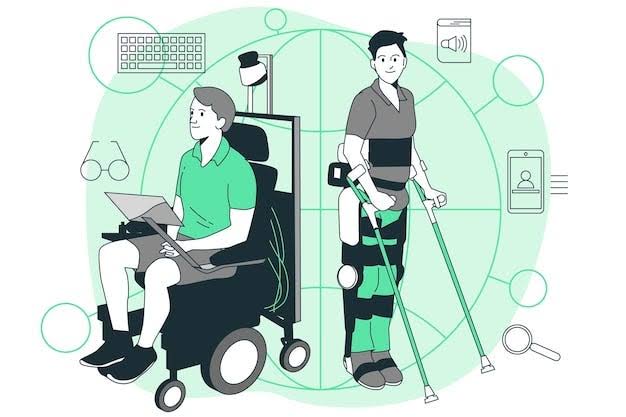Virtual reality (VR) has rapidly evolved from an entertainment novelty to a transformative tool with significant applications in healthcare and mental wellness. As of 2025, VR is increasingly used to support mental health treatments, reduce stress, and improve emotional well-being.
By immersing users in controlled, interactive environments, VR allows therapists and individuals to address mental health challenges in innovative and highly effective ways. From anxiety and phobia treatments to mindfulness and cognitive therapy, VR is shaping a new era in mental health care.
Understanding Virtual Reality in Mental Health
Virtual reality is a technology that simulates realistic, interactive environments using headsets and motion-tracking devices. In mental health, VR is used to create immersive experiences that allow users to confront, manage, or alleviate psychological challenges under safe and controlled conditions. Unlike traditional therapy, VR enhances engagement and can provide real-time feedback, making treatments more experiential and personalized.
The appeal of VR in mental health care lies in its ability to:
- Create lifelike scenarios for exposure therapy
- Encourage relaxation and mindfulness through immersive environments
- Offer safe spaces for patients to confront fears without real-world risks
- Make therapy more engaging for individuals who struggle with conventional approaches
Applications of VR in Mental Health
1. Treatment of Anxiety Disorders and Phobias
VR is widely used for exposure therapy, a technique that gradually exposes individuals to the source of their fear in a controlled setting. For example:
- Patients with fear of flying can experience virtual flights
- Individuals with social anxiety can practice public speaking in simulated scenarios
- Phobia treatments for heights, spiders, or confined spaces can be conducted safely through VR
By repeatedly confronting fears in VR, patients build coping mechanisms and reduce anxiety in real-life situations.
2. PTSD Therapy for Trauma Recovery
Post-Traumatic Stress Disorder (PTSD) therapy has been revolutionized with VR. Therapists can recreate controlled simulations of triggering environments, allowing patients—such as military veterans or trauma survivors—to process emotions and desensitize trauma responses. Studies in 2025 continue to show that VR-based exposure therapy can significantly reduce PTSD symptoms when combined with professional guidance.
3. Stress Reduction and Mindfulness
Immersive VR experiences are increasingly used for relaxation and meditation. Virtual environments, such as peaceful forests, oceans, or starry skies, help users practice mindfulness and reduce stress. VR meditation applications are popular in workplaces, wellness programs, and personal mental health routines, promoting emotional balance and mental clarity.
4. Cognitive Rehabilitation and Therapy
VR is also applied in cognitive behavioral therapy (CBT) and rehabilitation programs for patients recovering from brain injuries, stroke, or cognitive disorders. Interactive VR exercises can improve memory, focus, problem-solving, and emotional regulation while engaging patients in enjoyable, gamified experiences.
5. Depression and Mood Management
Some VR platforms are designed to improve mood by providing uplifting environments, virtual social interactions, and guided mental exercises. These experiences help combat loneliness, enhance motivation, and support traditional therapy for depression.
Benefits of VR for Mental Health
- Enhanced Engagement: Immersive environments make therapy interactive and less intimidating.
- Safe and Controlled Exposure: Patients can face fears without physical risk.
- Accessibility: VR therapy can be conducted remotely, helping people in underserved areas.
- Real-Time Feedback: Therapists can monitor patient responses and adapt treatment on the spot.
- Motivation and Consistency: Gamified VR programs encourage regular participation in therapy sessions.
Challenges and Considerations
Despite its benefits, VR for mental health faces several challenges:
- Cost and Accessibility: VR headsets and software remain expensive for some individuals and clinics.
- Technological Barriers: Not all patients are comfortable with technology, and VR may cause motion sickness in some users.
- Limited Long-Term Research: While results are promising, more studies are needed to fully understand the long-term effectiveness of VR therapy.
- Privacy Concerns: Sensitive mental health data collected during VR therapy must be securely managed.
The Future of VR in Mental Health
As VR technology advances, its role in mental health care is expected to expand significantly. Future applications may include:
- AI-driven VR therapy sessions that personalize treatment in real time
- Integration with wearable devices to track heart rate, stress levels, and brain activity
- Social VR platforms for group therapy and mental health support communities
- Expanded use in schools, workplaces, and rehabilitation centers to promote wellness on a larger scale
By 2030, VR could become a standard complement to traditional therapy, bridging the gap between clinical treatment and accessible, self-guided mental health care.
Conclusion
Virtual reality is transforming the way mental health is approached, offering immersive, interactive, and effective tools for therapy, stress management, and emotional well-being. By providing safe, controlled environments for exposure, mindfulness, and rehabilitation, VR empowers both patients and therapists to achieve better outcomes. While challenges remain in cost and accessibility, the potential for VR to improve mental health treatment is immense, making it a key innovation for the future of emotional wellness.




VR is really transformative